
Introduction
Ghana faces an acute shortage of houses for the rapidly increasing population. Taking stock of the existing houses and monitoring increases are major concerns of the government. Data on housing conditions were collected as a fundamental component of the 2010 census, along with population dynamics. This chapter presents a picture of housing conditions in the Ashanti Region as of 2010.
Housing Stock
The number of houses in the Ashanti Region in 2010 is 574,066, and forms the highest proportion (16.9%) of houses in the country. The housing stock in 2010 was 74.6 percent greater than it was in 2000. The increase between 1984 and 2000 was even higher, at 87.2 percent (Table 12.1). The population of Ashanti Region increased by 32.3 percent over the figure in 2000. Over the same period, the population per house decreased to 8.3 in 2010 from 11.0 in 2000. This suggests an improvement in the housing situation for the population. Even though the proportion of urban households (63.5%) is higher than that of rural households (36.5%), there are more houses in the rural areas 304,256 (53.0%) than in the urban areas 269,810 (47.0 %). This indicates relatively more pressure on urban housing than on rural housing. Unsurprisingly, the number of households per house in the region is 2.0, but is 2.7 in urban areas and 1.4 in rural areas. In contrast, average household size for the region is 4.3, with 4.6 in rural areas and 4.1 in urban areas.
Type of Dwelling Units and Construction Materials
Type of dwelling units
Table 12.2 shows the types of dwelling units in the region and districts. About 92.9 percent of the dwelling units are of four types, namely, compound houses (52.2%), separate houses (24.7%), flats/apartments (8.0%) and semi-detached houses (8.0%). In the districts, the proportion of compound houses in total district housing is highest in Sekyere East (61.1%). In 13 districts, the proportions exceed 50.0 percent. The lowest proportion is in Amansie Central (38.1%), followed by Sekyere Central (39.5%). The proportion of separate houses is highest in Amansie Central (49.4%), followed by Adansi South (42.5%), Bosome Freho (42.3%) and Asante Akim South (40.6%). In 11 districts, the proportions are between 30.0 percent and 40.0 percent and in another 10 districts, the proportions are above 20.0 percent. In the remaining two districts, the proportions are below 20 .0 percent, namely, Kumasi Metropolis (15.7%) and Obuasi Municipal (16.1%). The proportion of semi-detached houses is mostly below 10 percent in the districts, except in Obuasi Municipal (14.8%) and Adansi North (11.2%). In 20 districts, the proportions are between 5.0 percent and 10.0 percent. In the remaining five districts the proportions are below 5.0 percent with the lowest proportion in Bosomtwi (3.5%), followed by Ahafo Ano South (3.7%).
In the case of flats/apartments, Kumasi Metropolis has the highest proportion (12.4%), followed by Kwabre East (11.3%). In five districts, the proportions are between 5.0 percent and 10.0 percent. In the remaining 20 districts, the proportions are below 5.0 percent, with the lowest in Atwima Mponua (1.1%), followed by Sekyere Central (1.7%). Huts/buildings in the same compound are fairly common in Sekyere Central (15.3%). In six other districts, the proportions are between 5.0 percent and 9.0 percent and in the remaining 20 districts, the proportions are below 5.0 percent, with the lowest in Obuasi Municipal (0.3%), followed by Kumasi Metropolis and Atwima Nwabiagya (0.6% each), Atwima Kwanwoma (0.7%) and Kwabre East (0.8%). Uncompleted houses are very few in all districts. The highest proportion is in Atwima Kwanwoma (8.9%) and Kwabre East (6.3%). In 10 districts, the proportions are below 1.0 percent, with the lowest in Offinso North and Ejura-Sekyedumase (0.5% each). For the remaining types of dwelling (tent, kiosk/containers and living quarters attached to office), the proportions in the districts are less than 1.0 percent each.
Appendix Table 12.2 shows the types of dwelling units in urban and rural areas. The types of dwelling units that predominate in terms of proportion in urban areas are in the same order as in the districts. In the rural areas, however, semi-detached houses and huts/buildings on same compound are relatively more widespread than flats/apartments. Compound houses are 56.5 percent in urban areas compared with 45.0 percent in rural areas. The proportion of separate houses in rural areas (36.9%) is double the proportion in the urban areas (17.4%). The proportions of flats/apartments and semi-detached houses are higher in urban areas (10.8% and 8.6%, respectively) than in rural areas (3.3% and 6.6%, respectively).
Construction Materials
Material for Outer Wall
Table 12.3 shows the materials used for construction of outer walls of dwelling units in the districts. The most widely used material for outer walls is cement blocks/concrete (71.9%), followed by mud brick/earth (21.4%). The proportions of other materials used for outer walls are very low, 2.3 percent for wood, 1.7 percent for landcrete and less than 1 percent for other materials. The proportion of cement blocks/concrete used is highest in Kumasi Metropolis (90.0%). In 17 districts, the proportions are above 50.0 percent. In the remaining nine districts, the proportions are below 50.0 percent, with the lowest in Adansi South (24.1%).
The mud brick / earth is the second most common material used for construction of outer walls. In the districts, the proportion of dwelling units that used mud brick / earth is highest in the Adansi South (69.4%), followed by Ahafo Ano South (67.3%), Atwima Mponua (65.7%) and Ahafo Ano North (62.9%). In five districts, the proportions are above 50.0 percent and in six districts the proportions are between 30.0 percent and 50.0 percent. In the remaining 12 districts, the proportions are below 30.0 percent with the lowest in Kumasi Metropolis (3.1%), followed by Kwabre East (7.8%) and Obuasi Municipal (10.1%). The proportion of landcrete use is relatively high in Amansie West (7.8%), followed by Afigya Sekyere (5.7%). In the remaining 25 districts, the proportions are mostly below 3.0 percent. Wood is used in less than 2.0 percent of dwellings in most districts, and other materials for the outer walls are used in less than 1.0 percent of dwellings in the districts.
Appendix Table 12.3 shows the materials used for construction of outer walls by locality. In urban areas, 88.2 percent of outer walls are constructed with cement blocks/concrete, 5.5 percent are constructed with mud brick/earth, 2.8 percent with wood and 1.0 percent with metal sheet/slate/asbestos. The percentage of outer walls constructed with other material (stone, burnt brick, landcrete, bamboo, palm leaf, thatch, raffia and others) is mostly below 1.0 percent. In rural areas, mud bricks/earth predominate in the construction of outer walls (47.9%) followed by cement blocks/concrete (44.7%). The proportion of rural dwelling units that have landcrete for their outer walls is 3.2 percent, compared with 0.8 percent in urban areas. Wood is used for outer walls in 1.6 percent of rural dwellings compared with 2.8 percent in urban areas. For the other materials, the proportions used for dwelling units are below 1.0 percent.
Materials for floor
Table 12.4 shows the materials used for construction of floors of dwelling units by district. Cement/concrete is used for the floor of most dwellings in all the districts (77.8%), followed by earth/mud (14.6%), terrazzo/tiles (2.9%), ceramic/porcelain/ granite/marble tiles (1.8%) and vinyl tiles (1.3%). Use of other materials (stone, burnt bricks, wood, etc.) is less than 1.0 percent each.
In the districts, the proportion of the dwelling units that use cement/concrete for the floor is highest in the Obuasi Municipal (91.2%) and lowest in Offinso North (60.8%). In the other districts, the proportions mostly exceed 70.0 percent. The proportion of dwelling units that use earth/mud for the floor is highest in Offinso North (37.8%), followed by Ahafo Ano South (37.4%), and it is lowest in Obuasi Municipal (2.2%). In the other districts, the proportions are mostly below 25.0 percent. The proportion of dwelling units that have terrazzo/tiles for floors is highest in Kumasi Metropolis (5.2%) and lowest in Offinso North and Atwima Mponua where the material is not used at all. In the other districts, the proportions are mostly below 1.0 percent. For the other floor materials, the proportions of dwelling units that have them are mostly below 1.0 percent in each district.
Appendix Table 12.4 shows the materials used for floors of dwelling units by locality. Those with cement/concrete floors are 82.4 percent compared with 69.7 percent in rural areas. The proportion of dwelling units with earth/mud floors is higher in rural areas (27.1%) than in urban areas (7.4%). The dwelling units with terrazzo/terrazzo tile floors are 4.2 percent in urban areas compared with 0.5 percent in rural areas. Dwelling units with ceramic/porcelain/granite/marble tiles are 2.3 percent in urban areas and 0.9 percent in rural areas. In rural areas, the use of stone for floors is highest in the rural areas and ranks third in terms of materials used.
Material for roofing
Table 12.5 shows that the materials used for roofing in the districts are predominantly metal sheets (89.5%), followed by cement/concrete (3.1%) and thatch/palm leaf /raffia (2.8%). The three materials are used in roofing 95.4 percent of dwellings.
In the districts, the proportion of the dwelling units that use metal sheets for roofing is highest in Atwima Nwabiagya (96.5%) and in 16 other districts, the proportions exceed 90 percent. In five districts, the proportions are between 80.0 percent and 90.0 percent. In the remaining five districts, the proportions are below 80.0 percent, with the lowest in Sekyere Central (68.5%), followed by Offinso North (68.6%), Ejura-Sekyedumase (71.6%), Sekyere Afram Plains (73.3%) and Amansie Central (78.6%).
In Sekyere Central (24.8%) and Sekyere Afram Plains (22.0%), more than 20.0 percent of dwelling units are roofed with thatch/palm leaf/raffia. In Mampong Municipal and Amansie Central, the proportions are 10.6 percent and 11.7 percent, respectively. In the remaining districts, the proportions are mostly below 3.0 percent. The use of other roofing materials is very low, with the proportions mostly below 2.0 percent.
In the urban areas, 91.1 percent of dwelling units are roofed with metal sheets and 4.5 percent with cement/concrete. The remaining 4.4 percent of dwelling units are roofed with other materials and the proportions are below 1.0 percent in each case. In the rural areas, metal sheets are also the dominant material used in roofing 87.0 percent of dwelling units, followed by thatch/palm leaf/raffia 6.9 percent, and bamboo 2.9 percent. Other roofing materials are used to roof less than 1.0 percent of dwelling units.
Room occupancy
Sleeping rooms
Table 12.6 shows the distribution of sleeping rooms per dwelling unit by district. Generally, as the number of sleeping rooms per dwelling unit increases, the proportion of dwelling units in the region and districts decreases. Thus, many households may be overcrowded in terms of the available sleeping rooms. In the region, 57.8 percent of dwelling units have only one sleeping room, 19.2 percent have two sleeping rooms and 9.2 percent have three sleeping rooms. The dwelling units that have 1-3 sleeping rooms form 86.2 percent and the remaining 13.8 percent of dwelling units have four and more sleeping rooms.
Among the districts, Kumasi Metropolis has the highest proportion of dwelling units with one sleeping room (64.4%) followed by Kwabre East (61.9%), Atwima Nwabiagya and Bosumtwi (60.8% each). In 11 districts, between 50.0 percent and 60 percent of the dwelling units have one sleeping room and in 10 districts, the proportions of dwelling units with one sleeping room are between 40.0 percent and 50.0 percent. In the remaining two districts the proportions of dwelling units with one sleeping room are below 40.0 percent, namely, Bosome Freho (37.2%) and Sekyere Central (39.6%).
The proportions of the dwelling units with two sleeping rooms are between 20.0 percent and 27.0 percent in 19 districts, with the highest in Offinso North and Amansie Central (26.9% each). In the remaining eight districts, the proportions are between 15.0 percent and 20.0 percent, with the lowest proportion in Atwima Nwabiagya (15.9%), followed by Kumasi Metropolis (16.0%).
Among the dwelling units with three sleeping rooms, the proportions are between 10.0 percent and 15 percent in 14 districts, with the highest proportion in Bosome Freho (14.3%). In the remaining 13 districts, the proportions are below 10.0 percent, with the lowest in Kumasi Metropolis (7.2%). Dwellings with four sleeping rooms are between 5.0 percent and 9.0 percent in 23 districts, with the highest in Bosome Freho (8.6%). In the remaining four districts, the proportions are below 5.0 percent, with the lowest in Kumasi Metropolis (4.4%). Bosome Freho has highest proportion of sleeping rooms of any district as the number of sleeping rooms increases beyond two.
Appendix Table 12.6 shows the distribution of sleeping rooms per dwelling unit by locality. In urban areas, 63.0 percent of dwelling units have one sleeping room and the proportion decreases as the number of sleeping room increases. In rural areas, a higher proportion of dwelling units have one sleeping room (63.0%) than in urban areas (57.8%). For two to five sleeping rooms, the proportions of dwelling units in urban areas are higher than those in rural areas. And for six or more sleeping rooms, the proportions of dwelling units are similar in both localities.
Holding and Tenancy
Ownership of dwelling unit
Table 12.7 shows the ownership of dwelling units in the region by district. The proportions of the three main types of ownership add up to 94.2 percent of the dwelling units as follows: 41.9 percent by a household member, 32.9 percent by other private individual and 19.4 percent by a relative who is not a household member. The proportion of dwelling units owned by a household member is highest in Bosome Freho (70.5%). In six districts, the proportions are between 60.0 percent and 70.0 percent. In eight districts, the proportions are between 50.0 percent and 60.0 percent and in nine districts, the proportions are between 40.0 percent and 50.0 percent. In the remaining three districts, the proportions are below 40.0 percent as follows, Obuasi Municipal (35.2%), Kwabre East (32.4%) and Kumasi Metropolis (30.6%).
The proportion of dwelling units owned by other private individual is highest in Kumasi Metropolis (44.3%) In 15 districts, the proportions are between 20.0 percent and 40.0 percent. In the remaining 11 districts, the proportions are below 20.0 percent with the lowest proportion in Bosome Freho (10.3%). The proportion of dwelling units owned by a relative who is not a member of the household is highest in Kwabre East (30.6%). In 13 districts, the proportions are between 20.0 percent and 30.0 percent. In the remaining 13 districts, the proportions are below 20.0 percent, with the lowest in Ejura-Sekyedumase (11.0%). The proportions for the other types of ownership of dwelling units are relatively small, mostly below 2.0 percent in each case.
Appendix Table 12.7 shows the types of ownership of dwelling units by locality. Three types of ownership account for 93.3 percent of dwelling units in the urban areas as follows: 41.4 percent by other private individuals, 32.9 percent by a household member and 19.0 percent by a relative who is not a household member. In the rural areas, three ownership types account for 95.8 percent of the dwelling units as follows, 57.6 percent by a household member, 20.1 percent by a relative who is not in the household and 18.1 percent by other private individuals. In the urban areas 41.4 percent of dwelling units are owned by other private individuals compared with 18.1 percent in the rural areas. And while 57.6 percent of rural dwelling units are owned by household members, the proportion in the urban areas is 32.9 percent. The proportions of dwelling units that are owned by relatives not in the households are very close in the rural areas and urban areas, 20.1 percent and 19.0 percent, respectively.
Tenure Arrangement
Table 12.8 shows the tenure arrangements of dwelling units in the region by district. Three types of tenure arrangements account for 99.2 percent of dwelling units as follows, 38.0 percent renting, 34.9 percent owner occupied and 26.3 percent rent-free. In the districts, the proportion of rented dwelling units is highest in Obuasi Municipal (56.0%), followed by Kumasi Metropolis (53.2%). These two districts are highly urbanized and many of the people are migrants who rent dwelling units. In six districts, the proportions are from 30.0 percent to 33.3 percent. In nine districts, the proportions are between 20.0 percent and 30.0 percent. In the remaining 10 districts, the proportions are below 20.0 percent with the lowest in Amansie Central (12.2%), followed by Bosome Freho (13.0%), Sekyere Afram Plains (13.2%) , Atwima Mponua (13.8%) and Adansi South (14.0%).
The proportion of dwelling units with owner-occupier is highest in Bosome Freho (65.2%), followed by Amansie Central (64.2%), Adansi South (64.0%) and Sekyere Central (62.6%). In 13 districts, the proportions are between 40.0 percent and 60.0 percent. In the remaining 10 districts, the proportions are below 40.0 percent, with the lowest in Kumasi Metropolis (21.6%), followed by Obuasi Municipal (27.1%) and Kwabre East (28.2%).
The proportion of rent-free dwelling units is highest in Kwabre East (38.7%), followed by Atwima Kwanwoma (33.5%) and Atwima Nwabiagya (33.3%). In nine districts, the proportions range narrowly from 30.0 percent to 32.5 percent. In the remaining 15 districts, the proportions are below 30.0 percent, with the lowest in Ejura-Sekyedumase (14.4%), followed by Obuasi Municipal (16.2%). Persons who are perching or squatting amount mostly to less than 1.0 percent each in the districts.
Appendix Table 12.8 shows the tenure arrangements of dwelling units by locality. In urban areas, 49.8 percent of dwelling units are rented compared with 17.6 percent in rural areas. Owner-occupied dwelling units are 52.8 percent in rural areas and 24.6 percent in urban areas. The proportion of dwelling units that are rent free is 29.0 percent in rural areas compared with 24.7 percent in urban areas.
Energy for Lighting and Cooking
Main Source of Lighting
Table 12.9 shows sources of energy for lighting in the region, by district. The major source of energy for lighting in the region is electricity (73.6%), followed by flashlight/torch (17.3%) and kerosene lamp (7.0%). The proportion of dwelling units that use electricity for lighting in the districts is highest in Kumasi Metropolis and Obuasi Municipal (91.2% each). In 14 districts, the proportions are between 60.0 percent and 80.0 percent. In five districts, the proportions are between 40.0 percent and 60.0 percent. In the remaining six districts, the proportions are below 40.0 percent, with the lowest proportion in Atwima Mponua (27.8%), followed by Adansi South (29.1%) and Ahafo Ano South (31.0%). The highest proportion of dwelling units that uses flashlight/torch for lighting is Atwima Mponua (59.8%), followed by Adansi South (53.0%) and Ahafo Ano South (52.4%). In five districts, the proportions are between 40.0 percent and 50.0 percent. In 10 districts, the proportions are between 20.0 percent and 40.0 percent. In seven districts, the proportions are between 10.0 percent and 20.0 percent. In the remaining two districts, the proportions are below 10.0 percent, namely, Kumasi Metropolis (4.6%) and Obuasi Municipal (4.3%).
The proportion of dwelling units that use kerosene lamps for lighting is highest in Adansi North (16.8%), followed by Sekyere Central (16.2%). In six districts, the proportions are 15.0 percent and above. In 10 districts, the proportions are below 10.0 percent with the lowest proportion in Kumasi Metropolis (2.2%), followed by Obuasi Municipal (3.2%). The proportions of dwelling units that use other sources of energy for lighting are small, mostly below 1.0 percent in each case.
Appendix Table 12.9 shows sources of energy for lighting, by district and locality. Even though electricity is the dominant source of energy for lighting (48.5%) in rural areas, the proportion is far below that of the urban areas, 88.0 percent.
In the rural areas, 36.5 percent of dwelling units use flashlight/torch as a source of lighting compared with only 6.5 percent in urban areas. Kerosene is used as a source of lighting in 13.1 percent of dwelling units in rural areas compared with 3.5 percent in urban areas. The proportions that use other sources of energy for lighting are very small in both rural and urban areas.
Main Source of Cooking Fuel
Table 12.10 shows the sources of fuel for cooking in dwelling units in the region by district. Three sources stand out, namely, charcoal (39.3%), wood (29.8%) and gas (21.1%). The other sources are used mostly by less than 1.0 percent of dwelling units. The proportion of dwelling units in which charcoal is used is highest in Kwabre East (59.9%), followed by Kumasi Metropolis (51.8%) and Atwima Nwabiagya (50.2%). In four districts, the proportions are between 40.0 percent and 50.0 percent. In eight districts, the proportions are between 20.0 percent and 40.0 percent. In the remaining 12 districts, the proportions are below 20.0 percent, with the lowest proportion in Amansie Central (8.6%), followed by Atwima Mponua (10.0%), Ahafo Ano South (10.1%) and Bosome Freho (10.9%).
The proportion of dwelling units that uses wood as a source of energy for cooking is highest in Amansie Central (83.7%), followed by Atwima Mponua (82.3%) and Ahafo Ano South (80.6%). In 10 districts, the proportions are between 60.0 percent and 80.0 percent. In eight districts, the proportions are between 40.0 percent and 60.0 percent. In the remaining four districts, the proportions are below 40.0 percent with the lowest proportion in Kumasi Metropolis (1.5%), followed by Obuasi Municipal (7.8%) and Kwabre East (13.2%).
The proportion of dwelling units that uses gas as source of fuel for cooking is 21.1 percent for the region. In the districts, the proportion of dwelling units that uses gas as fuel for cooking is highest in Kumasi Metropolis (34.3%), followed by Obuasi Municipal (27.2%). In eight districts, the proportions are between 10.0 percent and 20.0 percent. In another eight districts, the proportions are between 5.0 percent and 10.0 percent. In the remaining nine districts, the proportions are below 5.0 percent, with the lowest proportion in Atwima Mponua (2.1%), followed by Offinso North and Sekyere Central (3.0% each) and Ahafo Ano South (3.4%).
In urban areas, the major source of energy for cooking in dwelling units is charcoal (50.8%), followed by gas (29.9%) and wood (7.5%). Other sources of energy for cooking are used by small proportions in the dwelling units, less than 1.0 percent in each case. In rural areas, the major source of fuel used in dwelling units for cooking is wood (68.6%) compared with 7.5 percent in urban dwelling units. While 19.4 percent of dwelling units in the rural areas use charcoal as source of fuel for cooking, the proportion is 50.8 percent in the urban areas. Gas as source of fuel for cooking is used by 5.8 percent in the rural areas compared with 29.9 percent in the urban areas. Electricity as a source of fuel for cooking is used by 0.9 percent in urban dwelling units and 0.3 percent in rural dwelling units.
Energy for Lighting and Cooking
Main Source of Lighting
Table 12.9 shows sources of energy for lighting in the region, by district. The major source of energy for lighting in the region is electricity (73.6%), followed by flashlight/torch (17.3%) and kerosene lamp (7.0%). The proportion of dwelling units that use electricity for lighting in the districts is highest in Kumasi Metropolis and Obuasi Municipal (91.2% each). In 14 districts, the proportions are between 60.0 percent and 80.0 percent. In five districts, the proportions are between 40.0 percent and 60.0 percent. In the remaining six districts, the proportions are below 40.0 percent, with the lowest proportion in Atwima Mponua (27.8%), followed by Adansi South (29.1%) and Ahafo Ano South (31.0%). The highest proportion of dwelling units that uses flashlight/torch for lighting is Atwima Mponua (59.8%), followed by Adansi South (53.0%) and Ahafo Ano South (52.4%). In five districts, the proportions are between 40.0 percent and 50.0 percent. In 10 districts, the proportions are between 20.0 percent and 40.0 percent. In seven districts, the proportions are between 10.0 percent and 20.0 percent. In the remaining two districts, the proportions are below 10.0 percent, namely, Kumasi Metropolis (4.6%) and Obuasi Municipal (4.3%).
The proportion of dwelling units that use kerosene lamps for lighting is highest in Adansi North (16.8%), followed by Sekyere Central (16.2%). In six districts, the proportions are 15.0 percent and above. In 10 districts, the proportions are below 10.0 percent with the lowest proportion in Kumasi Metropolis (2.2%), followed by Obuasi Municipal (3.2%). The proportions of dwelling units that use other sources of energy for lighting are small, mostly below 1.0 percent in each case.
Appendix Table 12.9 shows sources of energy for lighting, by district and locality. Even though electricity is the dominant source of energy for lighting (48.5%) in rural areas, the proportion is far below that of the urban areas, 88.0 percent.
In the rural areas, 36.5 percent of dwelling units use flashlight/torch as a source of lighting compared with only 6.5 percent in urban areas. Kerosene is used as a source of lighting in 13.1 percent of dwelling units in rural areas compared with 3.5 percent in urban areas. The proportions that use other sources of energy for lighting are very small in both rural and urban areas.
Main Source of Cooking Fuel
Table 12.10 shows the sources of fuel for cooking in dwelling units in the region by district. Three sources stand out, namely, charcoal (39.3%), wood (29.8%) and gas (21.1%). The other sources are used mostly by less than 1.0 percent of dwelling units. The proportion of dwelling units in which charcoal is used is highest in Kwabre East (59.9%), followed by Kumasi Metropolis (51.8%) and Atwima Nwabiagya (50.2%). In four districts, the proportions are between 40.0 percent and 50.0 percent. In eight districts, the proportions are between 20.0 percent and 40.0 percent. In the remaining 12 districts, the proportions are below 20.0 percent, with the lowest proportion in Amansie Central (8.6%), followed by Atwima Mponua (10.0%), Ahafo Ano South (10.1%) and Bosome Freho (10.9%).
The proportion of dwelling units that uses wood as a source of energy for cooking is highest in Amansie Central (83.7%), followed by Atwima Mponua (82.3%) and Ahafo Ano South (80.6%). In 10 districts, the proportions are between 60.0 percent and 80.0 percent. In eight districts, the proportions are between 40.0 percent and 60.0 percent. In the remaining four districts, the proportions are below 40.0 percent with the lowest proportion in Kumasi Metropolis (1.5%), followed by Obuasi Municipal (7.8%) and Kwabre East (13.2%).
The proportion of dwelling units that uses gas as source of fuel for cooking is 21.1 percent for the region. In the districts, the proportion of dwelling units that uses gas as fuel for cooking is highest in Kumasi Metropolis (34.3%), followed by Obuasi Municipal (27.2%). In eight districts, the proportions are between 10.0 percent and 20.0 percent. In another eight districts, the proportions are between 5.0 percent and 10.0 percent. In the remaining nine districts, the proportions are below 5.0 percent, with the lowest proportion in Atwima Mponua (2.1%), followed by Offinso North and Sekyere Central (3.0% each) and Ahafo Ano South (3.4%).
In urban areas, the major source of energy for cooking in dwelling units is charcoal (50.8%), followed by gas (29.9%) and wood (7.5%). Other sources of energy for cooking are used by small proportions in the dwelling units, less than 1.0 percent in each case. In rural areas, the major source of fuel used in dwelling units for cooking is wood (68.6%) compared with 7.5 percent in urban dwelling units. While 19.4 percent of dwelling units in the rural areas use charcoal as source of fuel for cooking, the proportion is 50.8 percent in the urban areas. Gas as source of fuel for cooking is used by 5.8 percent in the rural areas compared with 29.9 percent in the urban areas. Electricity as a source of fuel for cooking is used by 0.9 percent in urban dwelling units and 0.3 percent in rural dwelling units.
In rural areas, 35.8 percent of dwelling units have a separate room for exclusive use for cooking compared with 24.0 percent in urban areas. The proportion of rural dwelling units where cooking is done in an open space in the compound is 15.9 percent compared with 12.6 percent in urban dwelling units. The proportion of rural dwelling units that share a separate room with other households for cooking is 15.1 percent compared with 14.5 percent in urban dwelling units. The proportion of rural dwelling units that uses structures with roof but without walls as space for cooking is 10.0 percent compared with 1.6 percent in urban areas. The proportion of rural dwelling units where cooking is carried out on a verandah is 13.5 percent compared with 34.8 percent in urban dwelling units. The proportion of rural dwelling units that have no cooking space is 6.8 percent compared with 10.9 percent in urban dwelling units.
Date Created : 7/27/2023 12:00:00 AM


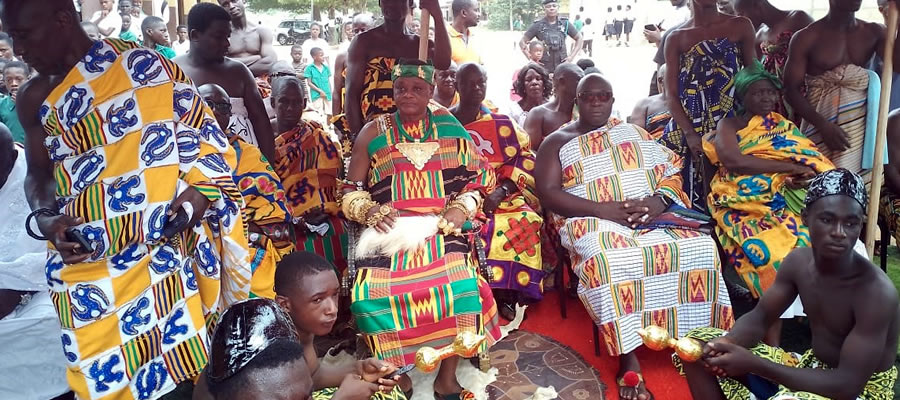
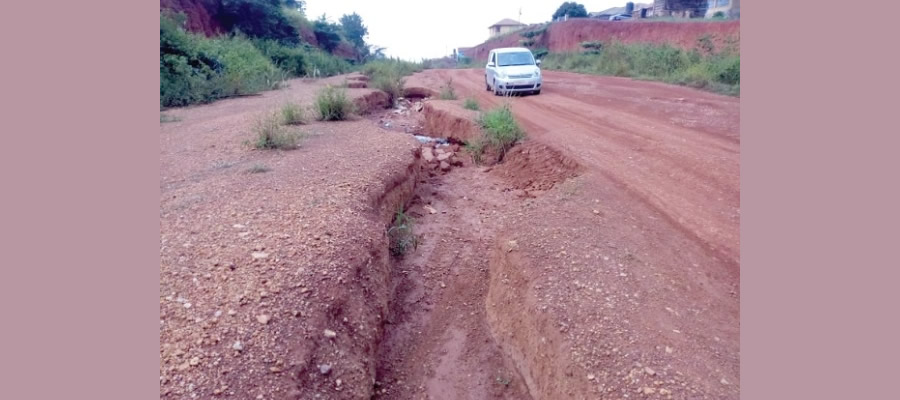
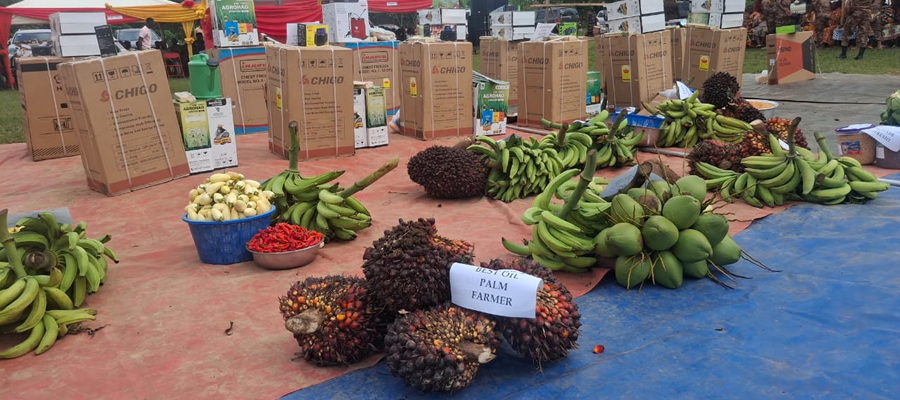
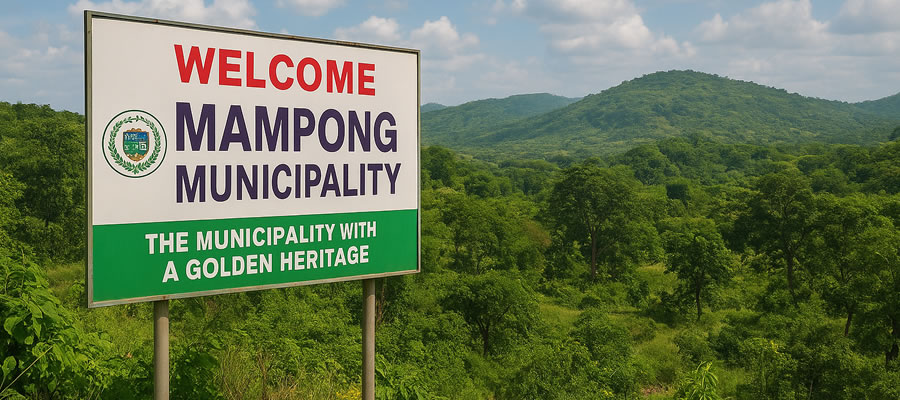
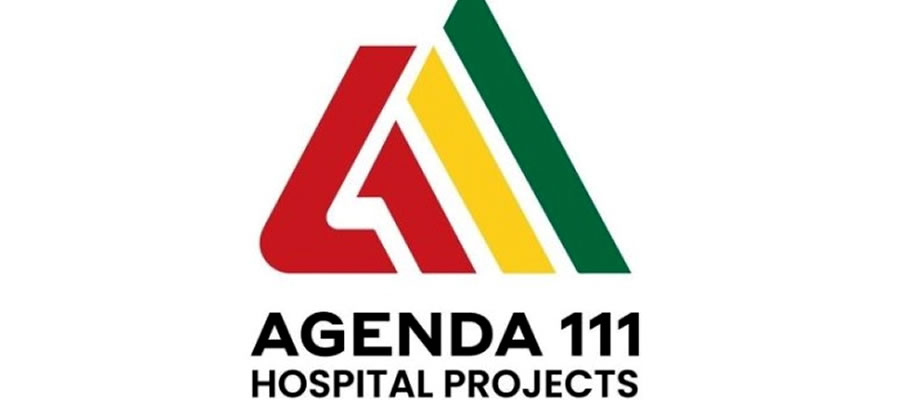





 facebook
facebook
 twitter
twitter
 Youtube
Youtube
 +233 593 831 280
+233 593 831 280 0800 430 430
0800 430 430 GPS: GE-231-4383
GPS: GE-231-4383 info@ghanadistricts.com
info@ghanadistricts.com Box GP1044, Accra, Ghana
Box GP1044, Accra, Ghana